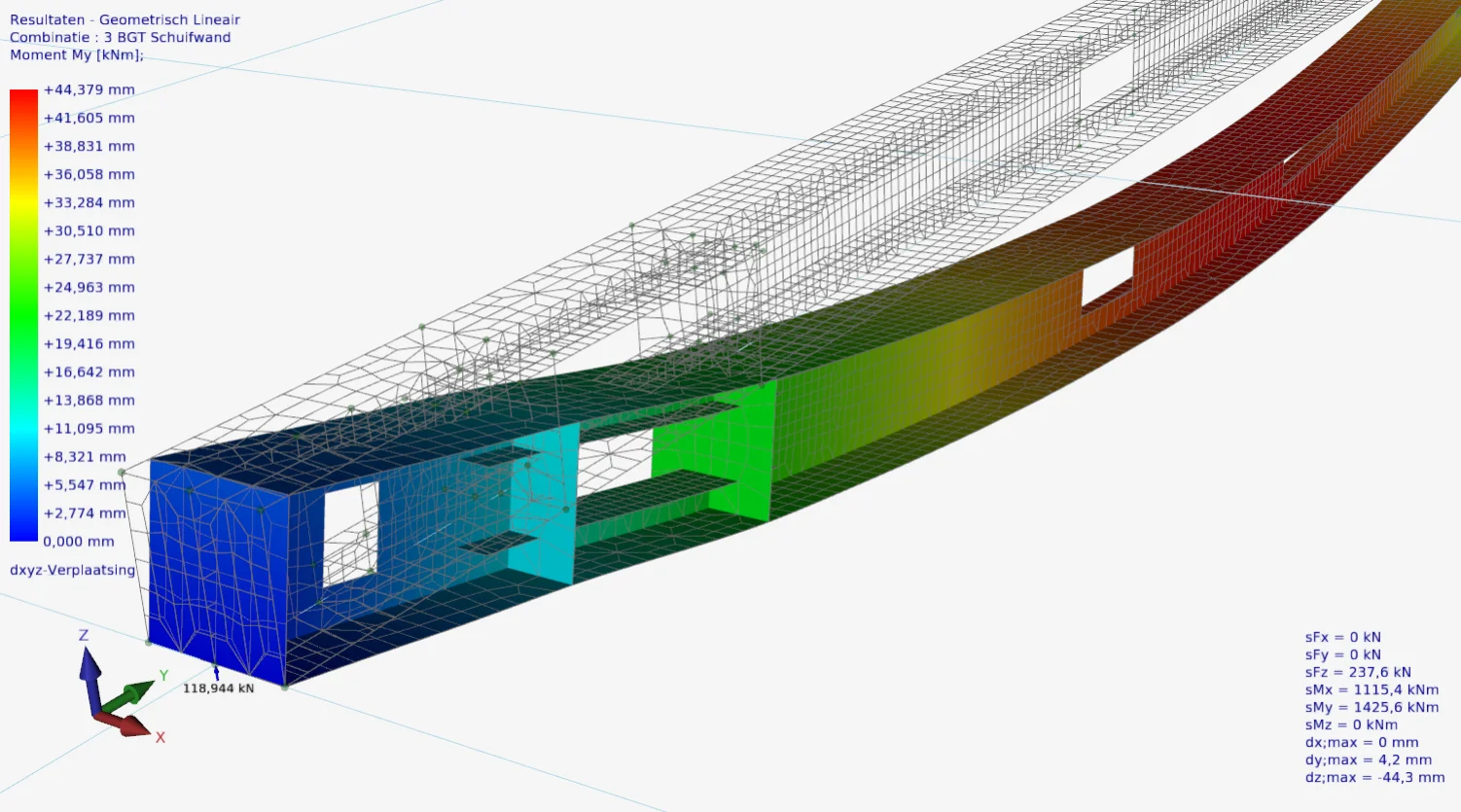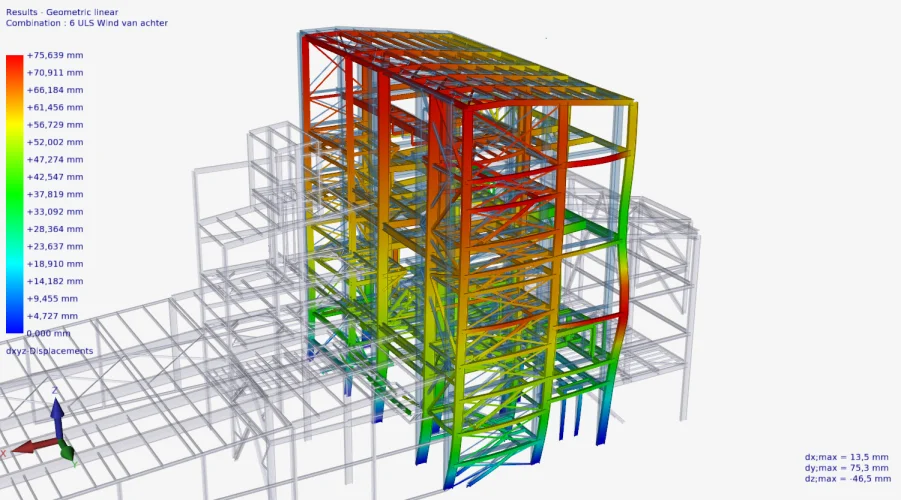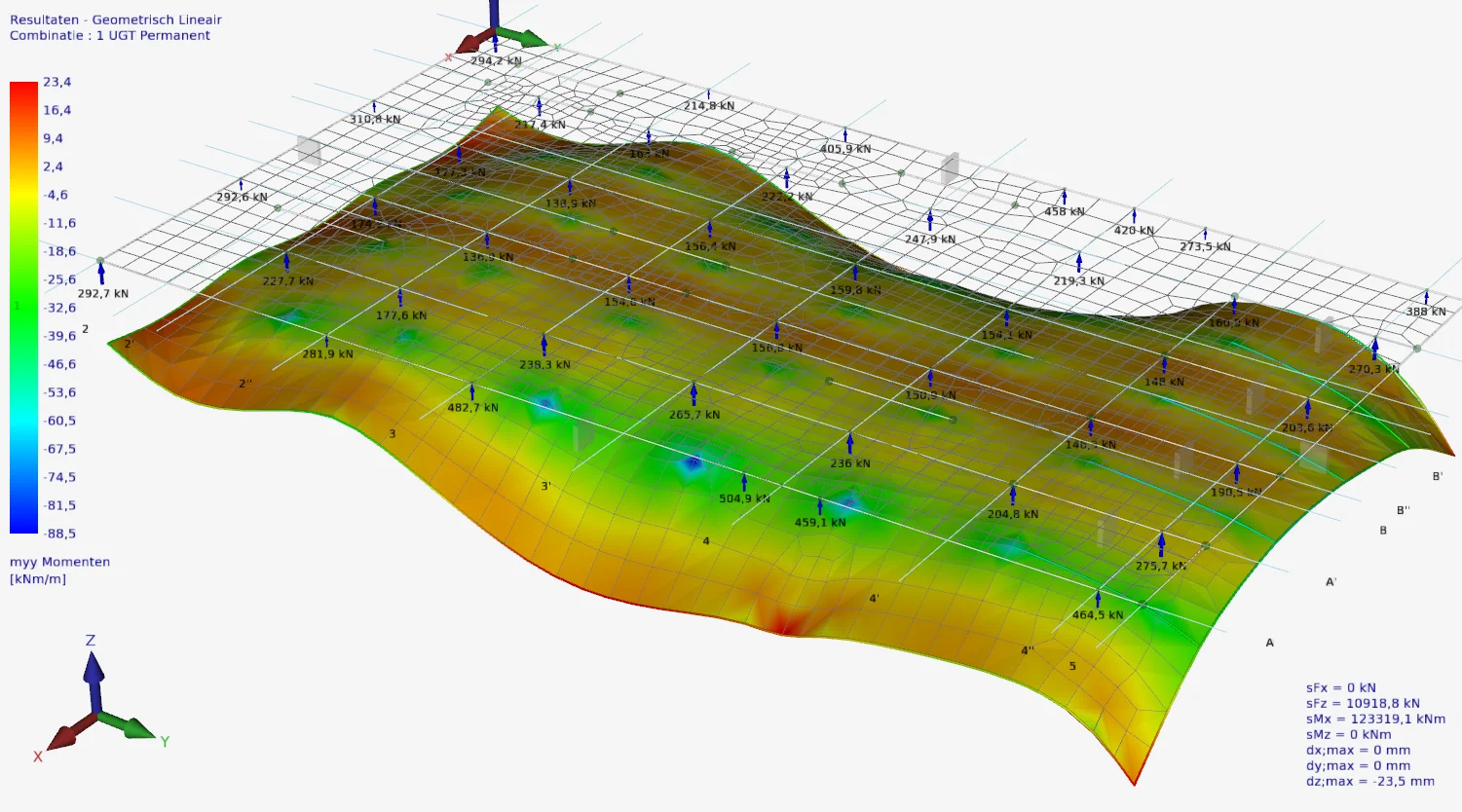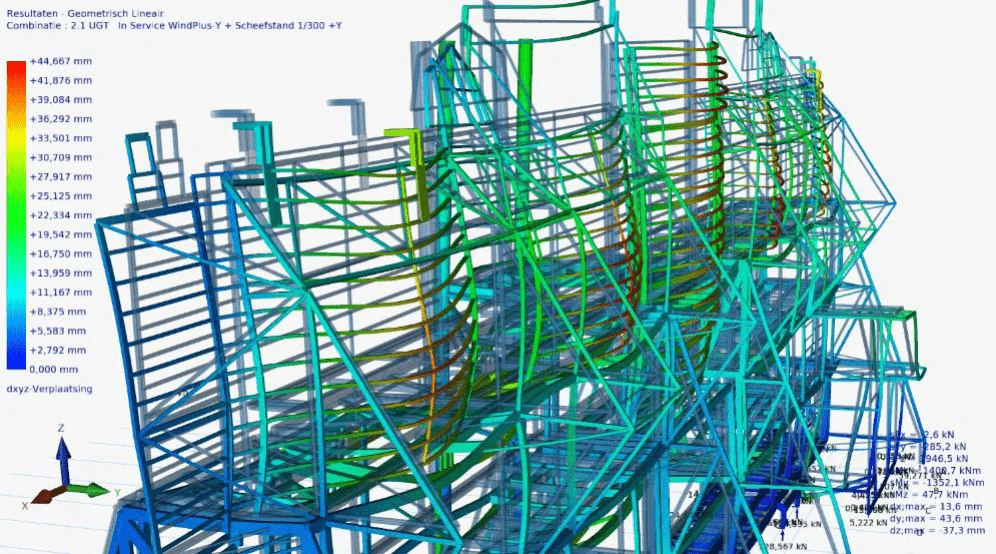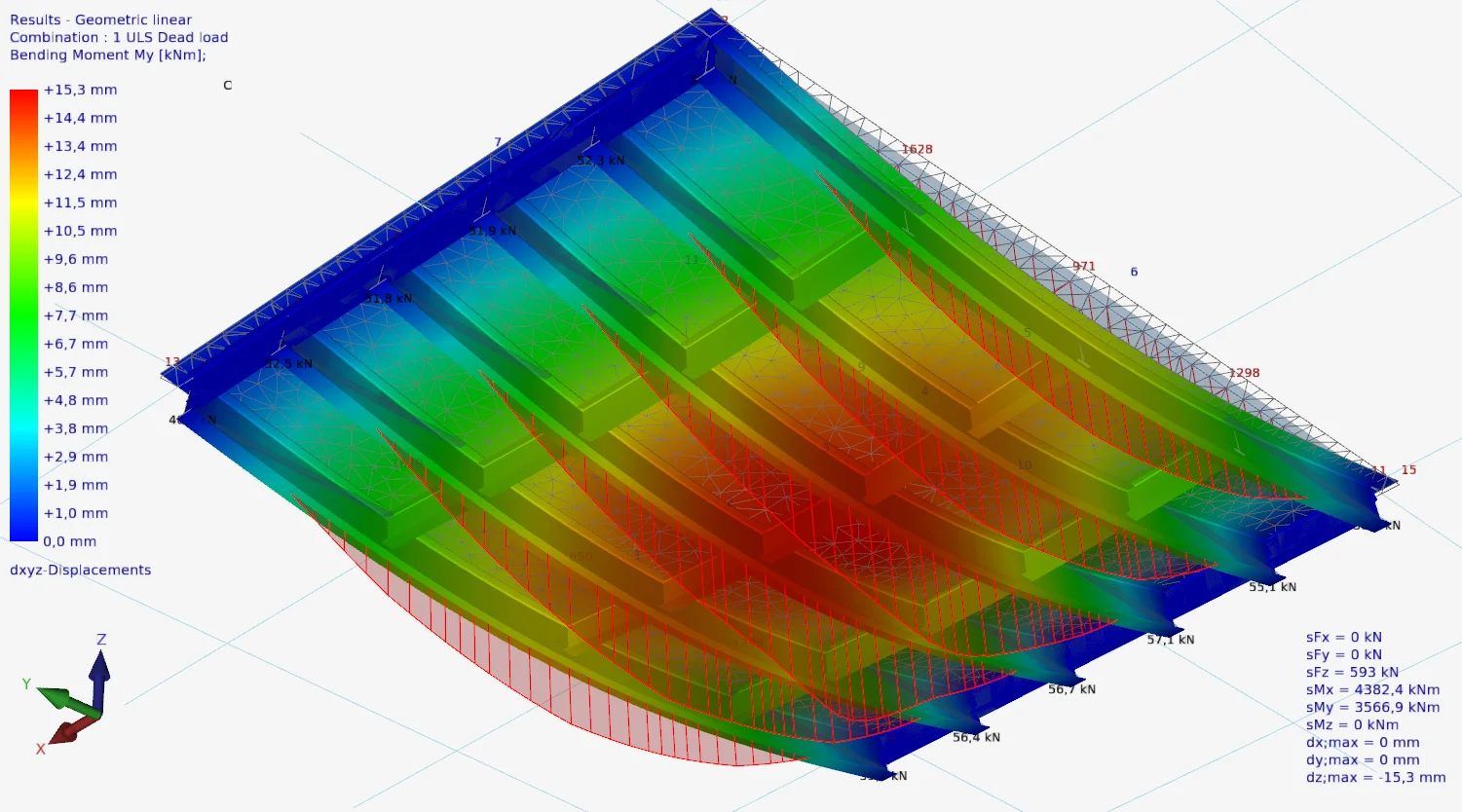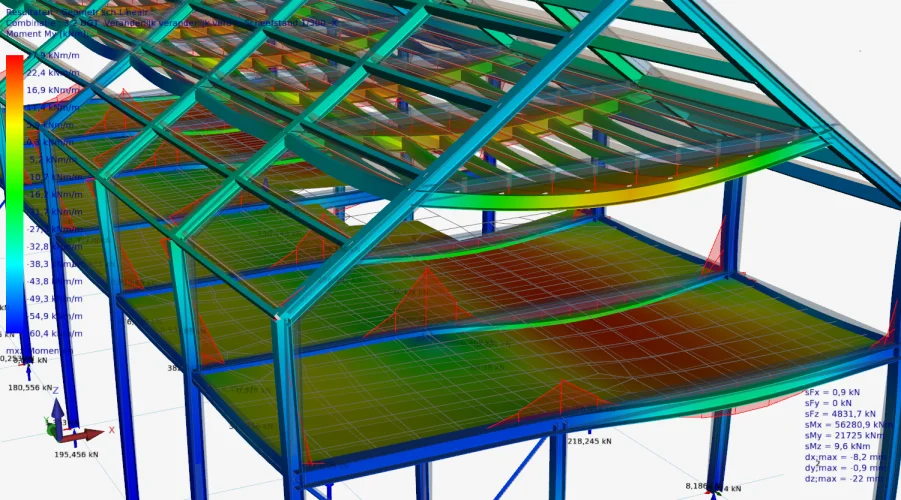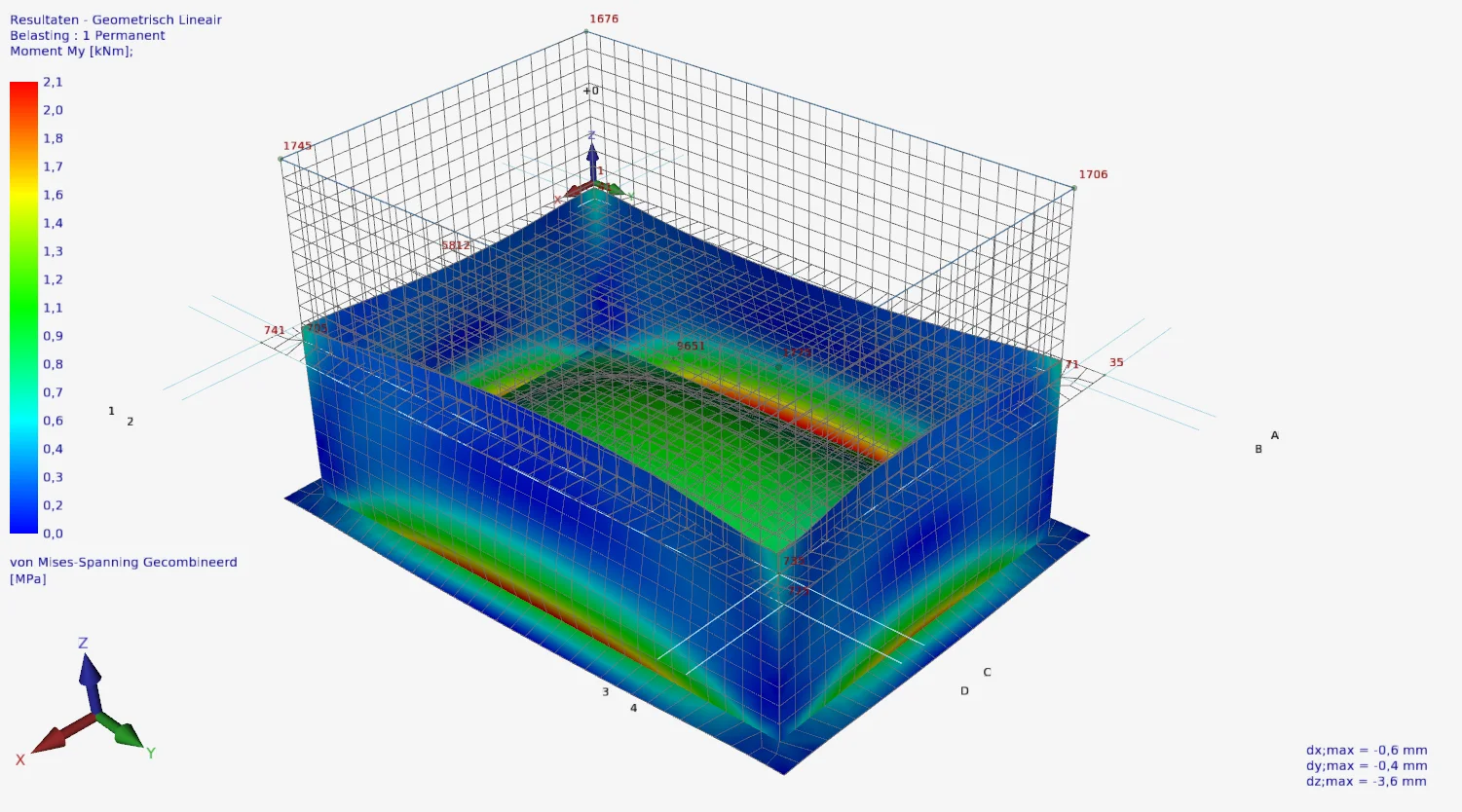XFEM4U generates fully transparent strength calculations that you as a structural engineer can check manually. This unique output gives you insight into the calculation, all formulas used including a reference to the EUROCODE or ANSI. The strength calculations of XFEM4U are easily accepted by inspection authorities. Have a look here for all the implemented standards.
XFEM4U is powerful software for 3D frames, plates and walls
Design and calculation software
Easy to use
User-friendly and modern
XFEM4U has a fully 3D interactive user-interface with OpenGL that makes entering your construction as easy as drawing in AutoCAD. The program is very easy to use (even without reading the manual first), intuitive, modern and incredibly fast. Snap functions for existing nodes, plates, beams, grid lines, X, Y and Z axis, as well as Copy, Mirror, Multiple Copy, Rotate functions allow you to enter your construction easily and quickly.
- Fast calculation programs with modern interface
- Simple drawing like in AutoCAD
- Multiple copy-, rotate-functions
- Full 3D interactive user interface
For a complete list of all functions, click here.
Powerful
Powerful computing engine
XFEM4U has an extremely powerful mechanics calculation engine (matrix solver) that allows you to quickly perform geometrically linear (GL) or non-linear (GNL) strength calculations.
Structural Analyses of models with a large number of beams and/or plate elements are calculated at lightning speed.
Calculation
Unique transparent calculation output
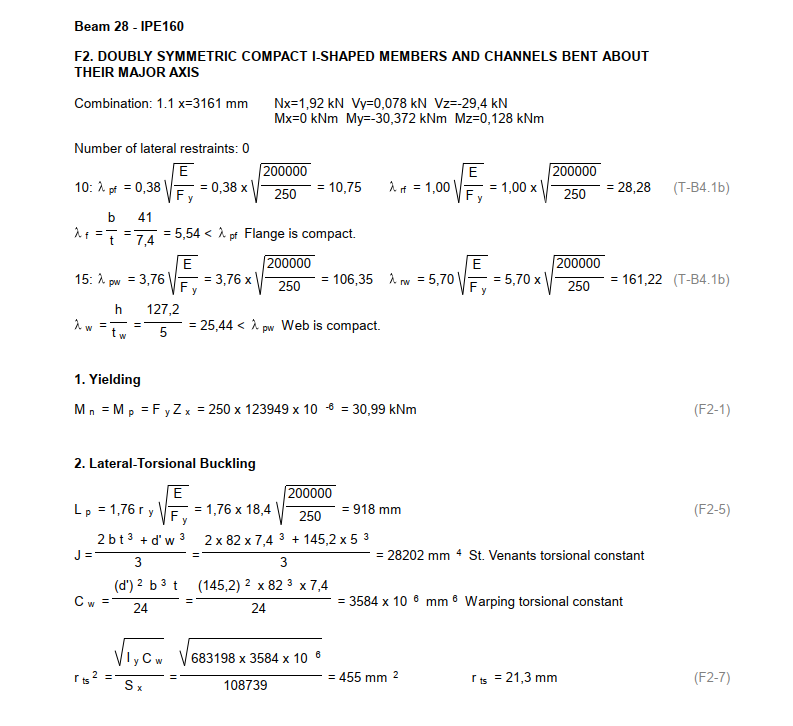
Steel
EN 1993 steel module
XFEM4U has an integrated EN 1993-1-1 steel module. The steel checks are performed according to the latest Eurocodes. You are therefore always completely up-to-date with the latest standards.
The ANSI/AISC 360-16 steel code is implemented as well.
The steel checks in XFEM4U are based on a geometrically non-linear analysis (second-order analysis) in which initial sway imperfections (initial system imperfections) are automatically taken into account. This is an accurate calculation method and is applicable for any (portal) construction. Sway and braced/non-sway frameworks.
Whether the structure is “sensitive” to 2nd order effects follows directly from the analysis. It is no longer necessary to calculate error-prone buckling lengths. Testing for buckling stability is implicitly included in the analysis.
A Steel Optimization module is provided that allows you to quickly and easily create the most optimal steel design. You can save many steel kilos with this.

Steel connections
EN 1993-1-8 steel connections
XFEM4U has an integrated EN 1993-1-8 connection module. Girder-column moment connections and moment butt joints can be easily implemented. The rotational stiffness of connections is load-dependent and affects the force distribution. In XFEM4U, the load-dependent rotational stiffness is automatically taken into account for all moment connections. This naturally gives the most accurate results and leads to an economically optimal design. For small moments (below 2/3 Mj,Rd), initial rotational stiffness Sj,ini is calculated. For larger moments with the rotational stiffness Sj corresponding to the bending moment Mj,Ed. The trilinear rotational stiffness diagram is used for this purpose.
The steel structure can now be a lot cheaper
By already considering flexible connections in the design of the main supporting structure instead of fully rigid connections, connections can become much cheaper and a correct force distribution is calculated. With XFEM4U, the main structural engineer quickly and easily makes an economical design of the main supporting structure including the beam-column moment connections. It also saves the cost of a detail structural engineer.
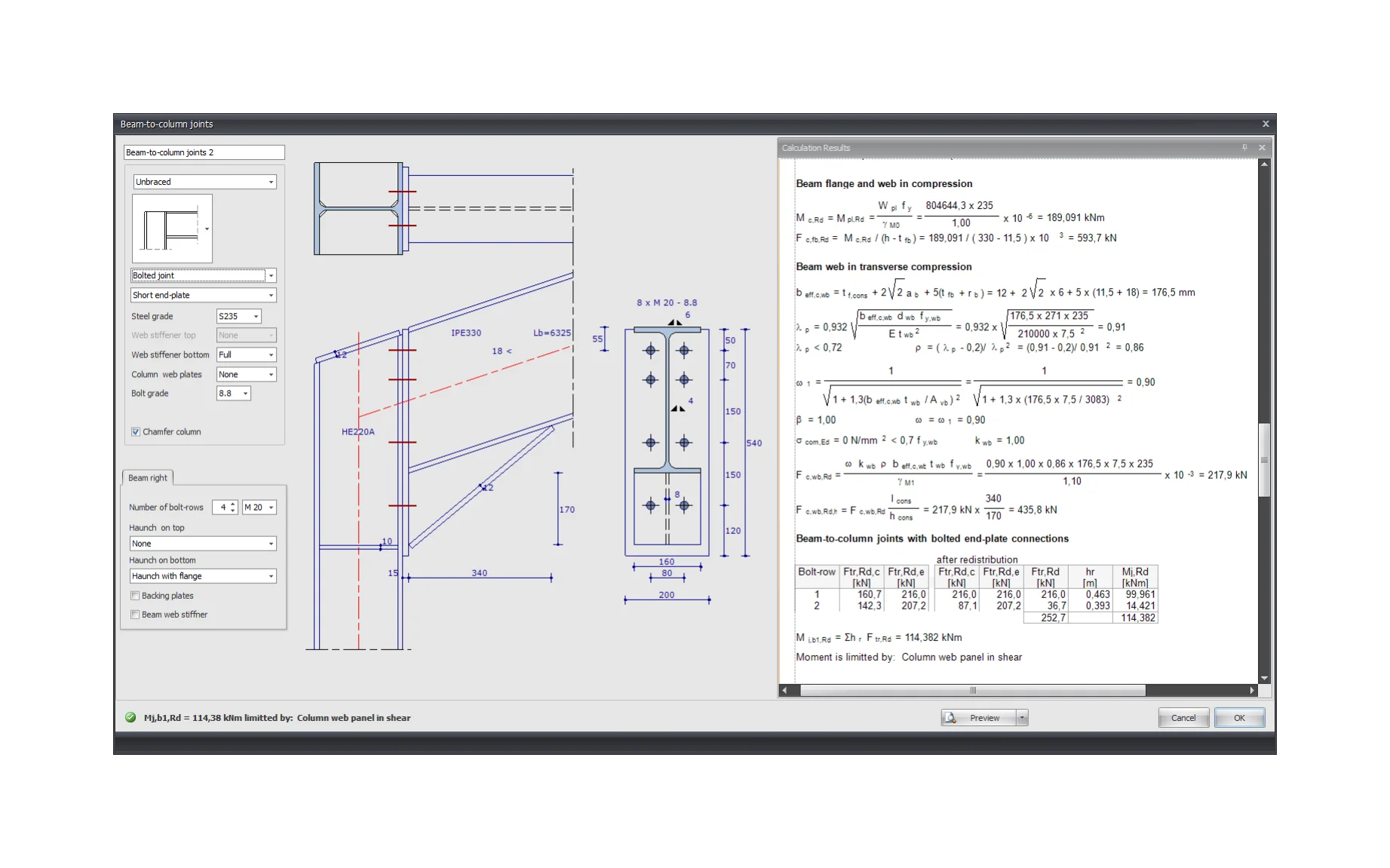
Timber
EN 1995 timber module
XFEM4U has an integrated EN 1995-1-1 wood module. Timber checks according to the latest EUROCODES. Also timber checks in the ultimate limit state (UGT) are based on a geometrically non-linear analysis (second-order analysis) in which initial sway imperfections (initial system imperfections) are automatically taken into account. This is an accurate calculation method and is applicable for any (portal) construction. Sway and braced/non-sway frameworks.
Whether the structure is ‘sensitive’ to 2nd order effects follows directly from the analysis. It is no longer necessary to calculate error-prone buckling lengths. Testing for buckling stability is implicitly included in the analysis.
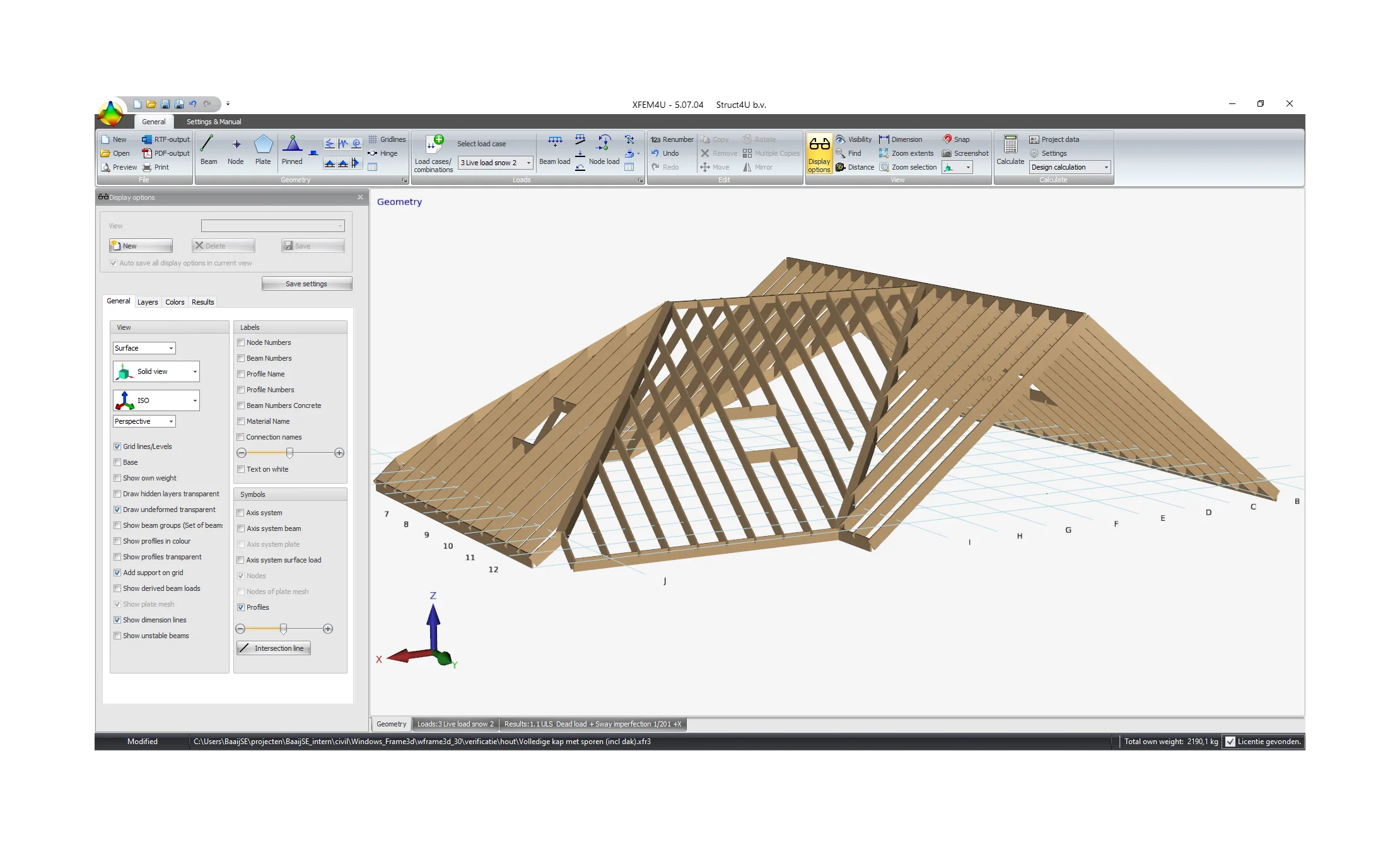
Concrete
EN 1992 concrete module
Beam grid concrete.
XFEM4U has an integrated EN 1992-1-1 concrete module. This allows you to design and test the reinforcement of a concrete foundation on piles.
Longitudinal reinforcement and stirrups.
With XFEM4U you can also change the reinforcement quickly and easily. The calculation is complete: review in UGT and BGT. Any cross-section with or without compression layer; reinforcement in 2 layers; compression reinforcement; very detailed output; stirrup design based on shear force and torsion; eccentric supports; eccentric beam loads.
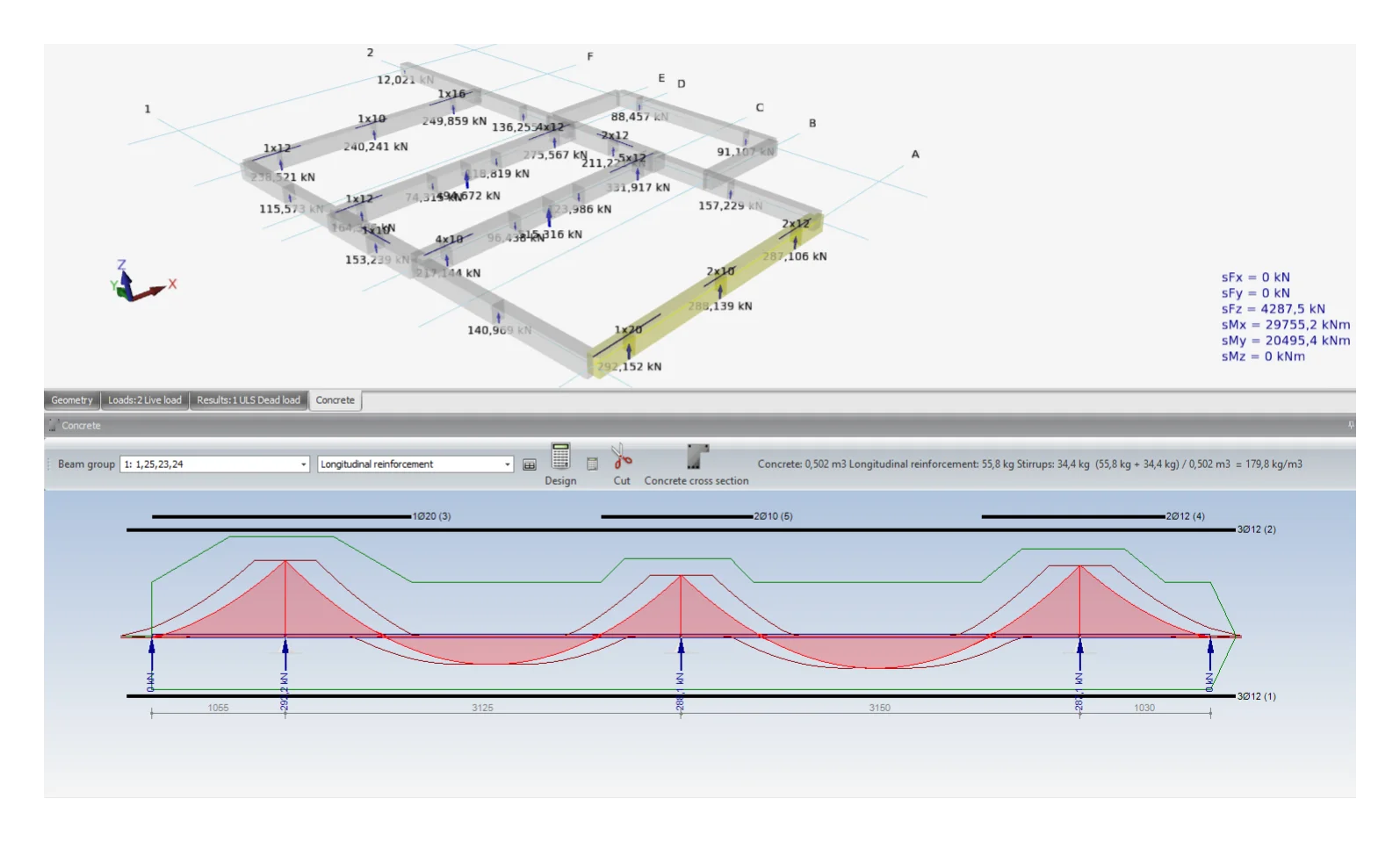
Load Generator
Load Generator
XFEM4U has a load generator that allows you to generate in 3D wind and snow loads and the corresponding combinations according to Eurocode.
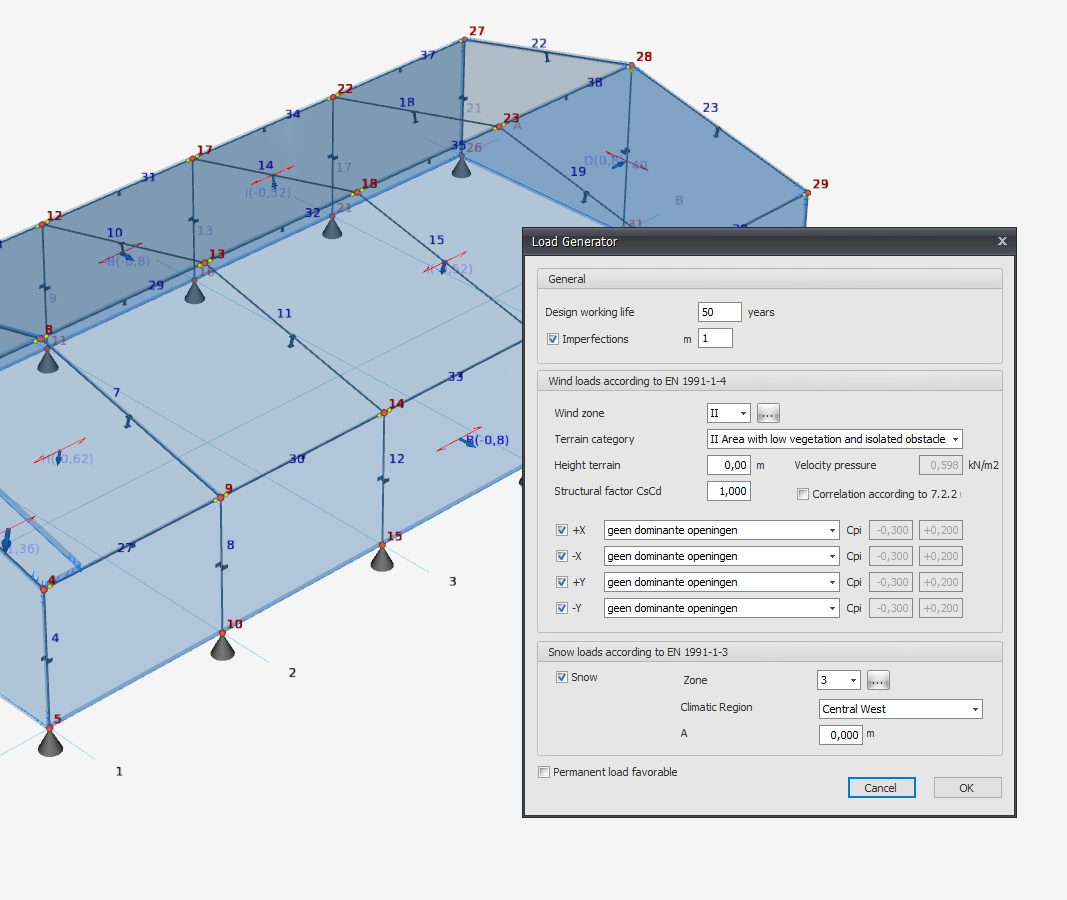
EEM
Finite elements in plates
The mesh element used in XFEM4U at plates is a modified Kirchhoff element. It was extended in 2021 by Professor Blaauwendraad. Usually Kirchhoff is less accurate in terms of the transverse force distribution within a plate. In the modified hybrid element, this is solved. As a result, it is an extremely robust mesh element with a very reliable transverse force distribution. For more information, see this scientific article on this new element fully implemented in XFEM4U.
XFEM4U has a fully integrated EN 1992-1-1 concrete module that allows you to design and check your reinforcement. The calculation is complete: checks in ultimate limit state (UGT) and serviceability limit state (BGT).
We have an effective and especially pleasant cooperation with prof.dr.ir. Johan Blaauwendraad and dr.ir.drs. René Braam. They have developed a calculation method with which reinforcement in a plate or slab can be designed efficiently.
Also curious about this calculation method?
Cement (2021/8) features an abridged version of the article. Article (1)
Click on the link below to download the full (long) version. Article (2)
Stay up-to-date
Latest news, updates and benefits. Be the first to receive them!
Agree to our Privacy Policy or contact us for more details
